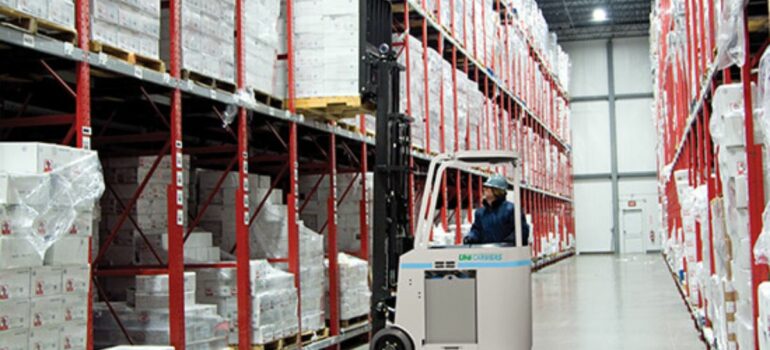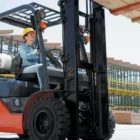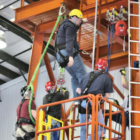Best Practices for Order Picker Training in Toronto
Toronto is the epicenter of trade and commerce and involves a large-scale exchange of goods. In this scenario, the role of the order picker becomes important. The efficiency of this activity is largely attributed to the skills of the order picker. Therefore in recent times, a trained and skilled order picker is highly sought after by the trade industry. Consequently, effective training of order pickers becomes important to train individuals for safe and efficient operations while adhering to the norms and rules.
In this guide, we will delve into the key aspects of order picker training in Toronto, focusing on the best practices that contribute to a successful and secure workplace.
Comprehensive Curriculum:
Order picker training in Toronto should start with a well-structured and comprehensive curriculum that covers the job’s theoretical and practical aspects. Emphasize the specific requirements and regulations in the Toronto area, ensuring that operators are well-versed in the local standards for safety and operation. The curriculum should cover equipment familiarity, load handling, emergency procedures, and the importance of adhering to workplace safety protocols.
Qualified Instructors:
The effectiveness of order picker training lies in the hands of qualified instructors. Seek trainers with extensive experience in the field and a deep understanding of Toronto’s regulations. Instructors should not only possess technical knowledge but also communicate effectively, ensuring that trainees grasp the information thoroughly. Practical, hands-on training sessions supervised by experienced instructors are vital for operators to gain confidence and proficiency in operating order pickers.
State-of-the-Art Training Facilities:
Providing a conducive learning environment is essential for order picker training. Ensure that training facilities in Toronto are equipped with state-of-the-art equipment that mirrors real-world warehouse scenarios. This hands-on experience is invaluable for operators, allowing them to familiarize themselves with the challenges they may encounter on the job. Additionally, simulating various scenarios helps in developing quick thinking and problem-solving skills.
Focus on Safety:
Safety is paramount in order picker training, and this emphasis should continue throughout an operator’s career. In Toronto, safety regulations are stringent, and operators must be well-versed in them. Training should cover the proper use of personal protective equipment (PPE), understanding load capacity, and safe operating procedures. Emphasize the importance of pre-operation equipment checks to identify and address potential issues before commencing work.
Hands-On Practical Training:
Theoretical knowledge alone is not sufficient; practical training is equally crucial. Incorporate hands-on exercises that mimic real warehouse conditions. Trainees should practice maneuvering the order picker, picking, and placing loads, and navigating through aisles and shelves. Practical training not only enhances skills but also instills confidence in operators, reducing the likelihood of accidents due to uncertainty or hesitation.
Regular Evaluations:
Continuous evaluation is key to identifying areas that require improvement. Implement regular assessments throughout the training program to gauge the progress of each operator. This ensures that any issues are addressed promptly, and additional training is provided if needed. Evaluate not only technical skills but also the operators’ understanding of safety protocols and their ability to apply them in different scenarios.
Emphasis on Legal Compliance:
Toronto has specific regulations governing the operation of order pickers, and operators must be aware of and comply with these laws. Include a segment in the training that focuses on legal compliance, covering topics such as licensing requirements, workplace safety regulations, and any recent updates in Toronto’s industrial laws. This ensures that operators are not only skilled but also operate within the legal framework.
Emergency Response Training:
In the event of an emergency, a quick and effective response is crucial. Train operators in Toronto to handle emergencies, including equipment malfunctions, fire, or accidents. Familiarize them with emergency exits, evacuation procedures, and the location of first aid kits. This training instills a sense of responsibility and preparedness in operators, contributing to a safer working environment.
Continuous Learning and Development:
Order picker training does not end once an operator receives their license. Encourage a culture of continuous learning and development. Provide opportunities for ongoing training sessions, workshops, and updates on the latest industry trends and safety protocols in Toronto. This commitment to learning ensures that operators remain skilled and up-to-date throughout their careers.
Documentation and Record-Keeping:
Maintain thorough documentation of the training process, including attendance records, assessment results, and any additional training provided. This not only ensures compliance with Toronto’s regulations but also serves as a reference for future assessments and audits. Having a comprehensive record-keeping system contributes to the overall efficiency and accountability of the training program.
Advanced Training Technologies:
In the rapidly evolving landscape of Toronto’s industries, integrating advanced training technologies can significantly enhance the order picker training experience. Virtual reality (VR) simulations and interactive e-learning modules provide a dynamic and engaging learning environment, allowing operators to virtually navigate through realistic warehouse scenarios. These technologies offer a risk-free platform for trainees to hone their skills, reinforcing theoretical knowledge with practical experience. By incorporating these cutting-edge tools, businesses in Toronto can stay ahead of the curve, providing a modern and effective training experience for order picker operators.
Industry-Specific Challenges:
Tailor the order picker training program to address industry-specific challenges prevalent in Toronto. Factors such as temperature variations, seasonal demands, and unique warehouse layouts may require specialized training modules. By addressing these challenges directly, operators can adapt more efficiently to the demands of their specific work environments. Customizing the training program ensures that operators are well-prepared for the intricacies of their daily tasks, fostering adaptability and resilience in the face of diverse working conditions.
Conclusion:
Order picker training in Toronto is a multifaceted process that requires careful planning and execution. By implementing the best practices outlined above, businesses can ensure that their order picker operators are not only proficient in their skills but also prioritize safety and legal compliance. Investing in comprehensive training programs not only contributes to the success of individual operators but also enhances the overall safety and efficiency of warehouse operations in Toronto. Forklift Training Mississauga offers various forklift training and certification programs including Order Picker training. Give us a call to get started!






